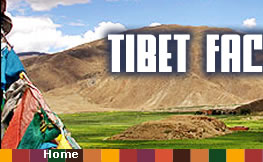|
The Tibet Autonomous Region is the provincial level region with
the smallest population and population density in China. Its 2004
population was 2.7368 million, a net increase of 351,000 over the
2003 figure.
As monks and nuns were not allowed to marry and did not normally
engage in production, the Tibetan population witnessed a reduction
of eight million from the 7th century to the period of the Qing
Dynasty (1644-1911), and a further reduction of 800,000 from 1911
to 1950, the year before Tibet gained peaceful liberation.
Data shows that the period from 1951 to the present time is the
one witnessing the fastest growth of the Tibetan population in the
past 1,000 years or more. Since 1970, the birthrate and the natural
growth rate have remained above the national average. The same
period has also seen impressive improvement in the health of the
Tibetans, with a lifespan averaging 67 years, as against 35.5 years
before 1951.
Changes in Tibetan
Population
|
Time
|
Tibetan Population
|
Remarks
|
|
Peaceful liberation of Tibet in 1951
|
1.15 million
|
Death rate: 28‰; infant mortality rate: 430‰
|
|
First national census in 1953
|
1.275 million
|
The national census did not include the Qamdo area and Tibet as
a whole. Tibetan population was counted based on estimates of the
local government of Tibet then under the leadership of the 14th
Dalai Lama
|
|
Second national census in 1964
|
1.251 million
|
Population of the Tibetan ethnic group stands at 1.209 million,
or 94.4% of the national total of Tibetans
|
|
Fourth national census in 1990
|
2.196 million
|
A net increase of 1.196 million over 1950
|
|
Fifth national census in 2000
|
2.6163 million (including those hailing from other parts of
China and excluding those who have left Tibet
|
The population of the Tibetan ethnic group is 2.4111
million,?92.2 percent of the total. The Hans total
155,300, or 5.9 percent of the total; the population of other
ethnic groups reaches 49,900, or 1.9 percent. Compared to the
fourth national census conducted in 1990, the population of the
Tibetan ethnic group increased by 314,400, or 15
percent.
|
|
2004
|
Year-end population reaches 2.7368 million
|
When compared with 2003, there was a net increase of 35,100,
with the birthrate reaching 17.4‰, the death rate 6.2‰ and the
population growth rate 11.2‰. The population of the Tibetan ethnic
group was double that of 1951; the infant mortality rate dropped
from 43% in 1959 to 3.1%; and the life expectancy rose from 35.5
years to 67 years.
|
|





